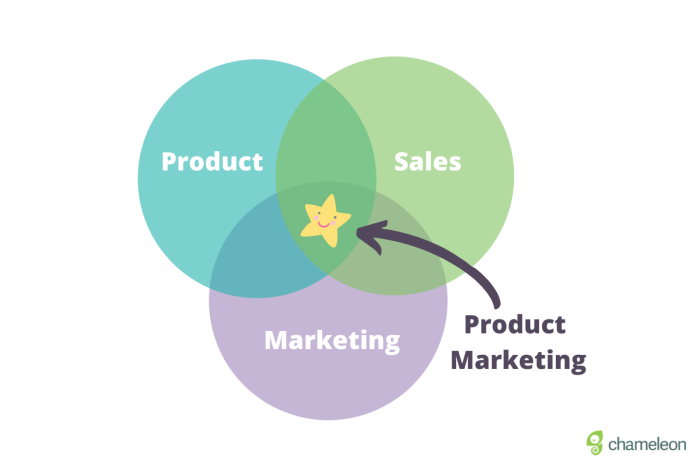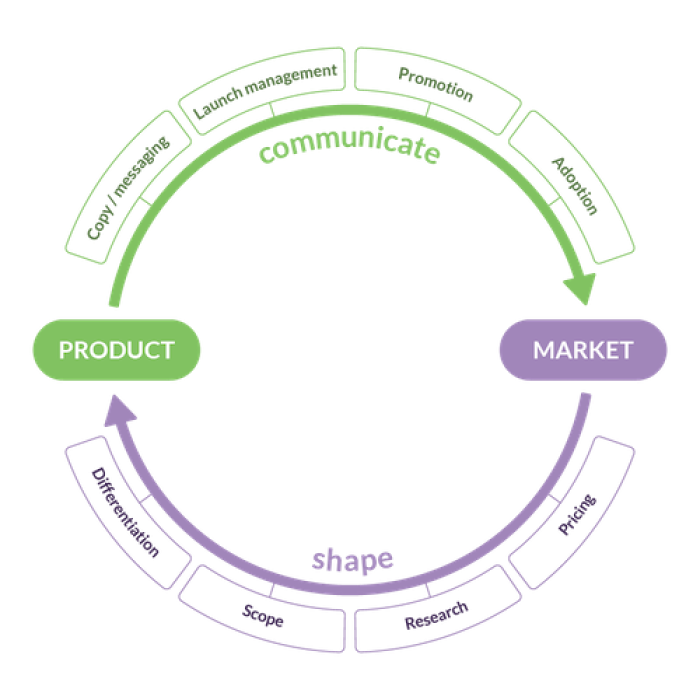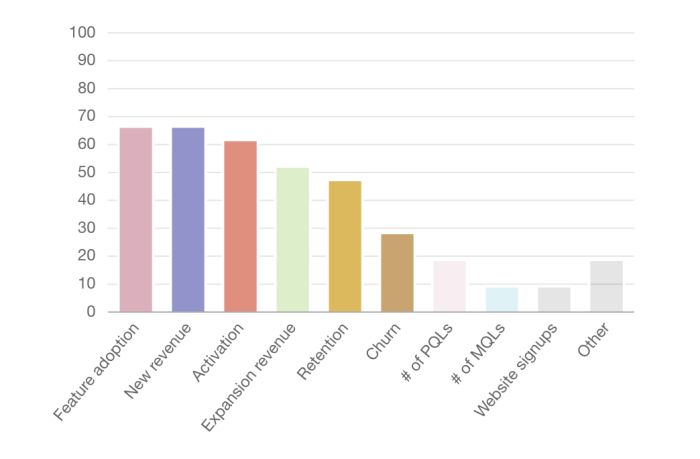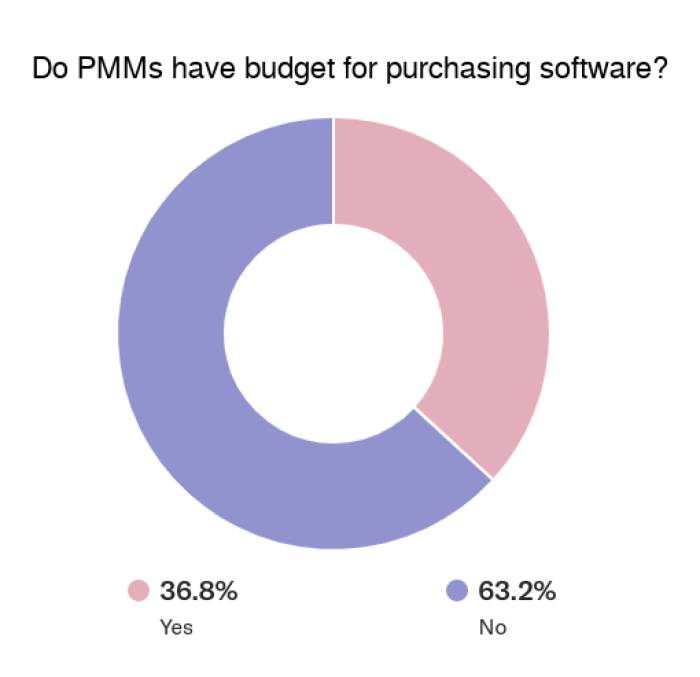The evolution of Product Marketing is one of the newest and most important trends in software marketing today, so it’s important to understand it and know how to apply it to your career or company.
Everyone is hiring Product Marketing Managers (PMMs) and there is a great demand for expertise in this space, so read on for a strategic and tactical definition of "What is Product Marketing?".
Product Marketing connects the dots between the product and the market, in both directions.
So PMMs are responsible for two flows – understanding the market (demand/need) to shape a product, and communicating the product (solution) to the market.
In some companies, Product Marketers are more of an engineer, in others a salesperson, and in some, a member of the marketing department. But it shouldn't be this way.
Product Marketing is a discipline of its own with a focus on product positioning, product launch navigation, and increasing the demand after the launch.
As a key role in product success, Product Marketing will only grow in importance as we continue to embrace a product-first world.
To get ahead of the curve, your organization should clearly define the role and responsibilities of PMMs and empower them with clear ownership, sufficient tooling, and executive visibility.
What is product marketing?
We’ve seen others define Product Marketing in different ways. For example, HubSpot defines it as the “process of bringing a product to market”, while Drift breaks it into two roles: “before” and “after” a product launch.
We think these definitions are too one-dimensional because they’re focused on products going TO the market. Instead, Product Marketing should also influence the creation of the product, by taking insights FROM the market back into the product team.
A truer definition of Product Marketing:
Product Marketing is what connects the dots between the product and the market in both directions. This means that the Product Marketing role is responsible for two flows: understanding the market (demand/need), shaping the product, and communicating the product (solution) to the market.

In (a) shaping the product, Product Marketers will undertake activities such as:
Customer and competitor research (to help identify unmet needs)
Persona development and segmentation (to better define the target audience)
Pricing updates (to better match value between product and market)
In (b) communicating the product, Product Marketers will undertake activities such as:
Content and collateral creation (to enable sales, success, and support teams)
Promoting the product/feature (to educate the market)
Launch management (coordinating the whole team in the delivery process)
What are the main tasks of a product marketing manager?
The confusion regarding product marketing comes from the fact that it's often difficult to distinguish what it does or how it's different from the job of other departments. But it is true that product marketing does a little bit of everything.
Like the sales department, the product marketer has to be in charge of driving business growth through various marketing strategies. They also need to be in sync with engineers and developers, deciding what to build, how to build it, and the most important thing: WHY building it. Finally, as its own name says, the product marketing manager must make sure that the final product reaches customers in your target market.
The product marketer's responsibilities vary according to the type of company, especially when it comes to SaaS products. In some, they are more of an engineer, in others a salesperson, and in some, a member of the marketing team. But it shouldn't be this way.
Product Marketing is a discipline of its own that every day has more weight in companies, and that's why we have to distinguish it perfectly. In most cases, a product marketer has three main tasks:
Communicates the positioning of the product, influences the product roadmap and its go-to-market strategy, and identifies customer pain points
Navigates the launch and advocates for the product and its use among B2B customers and vendors
Increases the demand for the product and its use after the launch

The visual representation of product marketing
Tania Clarke, Product Marketing Lead at Qwirl, within her presentation for the Women in Product meetup classified product marketers into two separate “types”: Inbound and Outbound. This reflects the traditional bias of companies, but we believe the modern PMM needs to have the responsibility and capacity for both.
Product Marketing is very much the glue that brings together teams across the organization to enable the perfect match between product and market, and thereby create success for the organization.
As part of our interview and survey series with Product Marketers (you can add your perspective, too) we found the following key metrics part of the PMM role:

% of Product Marketing Managers who indicated this as a key metric for their role
As you can see ‘Feature adoption’ and ‘New revenue’ are the most important aspects of a Product Marketer’s job. These goals are intrinsically linked for all product-first companies because feature adoption should drive greater value for the user, and thereby increase their willingness to pay.
It also ties in perfectly with the definition above, because driving adoption requires the right feature to be defined and built, and then effectively communicated to the customer.
The importance of the in-product marketing
Building the right product for the market is one of the first and most important stages of startup success, so it should be amply clear how critical Product Marketing is in creating Product-Market fit. Therefore we recommend that a PMM should be one of the first marketing/growth hires for early-stage teams.
And the first test of Product-Market fit is when new users are exposed to your product for the first time. If you’re able to connect a new user to value quickly such that they convert to paid, it is the strongest indication that your product is succeeding. Therefore helping your PMMs focus on user onboarding to drive better product adoption and new revenue should probably be one of their first key jobs!
Aside: Our friends at Emergence Capital go into more detail on which type of marketer to hire at which stage.
The State of Product Marketing today
Product Marketing today is what Customer Success was five years ago; misunderstood but easily thrown around.
Back then, Customer Success sounded cool, so more companies started to adopt the role. Often it was really still Customer Support, although there was a growing appreciation of the value that a true Success role brought.
Of the dozens of Product Marketers that we interviewed (from companies such as Gusto, Zillow, Front, Hotjar) one common complaint was: “Colleagues don’t know how to work with Product Marketers”.
A common source of confusion was how Product Marketers differed from other types of marketers, and this caused PMMs to be under or mis-leveraged. Product Managers are amongst the most guilty of this, especially troublesome due to the close collaboration required between both roles.
In most cases, Product Marketing suffers from being loosely defined, having limited executive ownership, few decisive KPIs, and almost no software budget.

Source: Chameleon Product Marketing interviews (sample size ~25 companies)
What this means is:
1. PMMs need to better show their impact and exert strategic influence
2. Non-PMMs need to know how to leverage Product Marketing to drive success
We’ll cover both here so you may wish to help your colleagues by sharing this article with them!
How Product Marketing got here 🤔
Product Marketing isn’t actually a new role; it’s been around for many years. So why is it suddenly becoming so important?
This is down to two key differences in software today:
The delivery model has changed from licensing to SaaS
We’re moving towards a product-first world
In the past, technology products were sold through executive relationships and field sales teams. A new customer would receive a lot of sales attention (with demos, explainers, and discussions) and once acquired, would transition to the onboarding/training and support teams (until renewal time). Sales were King and every function supported it, including Product Marketing.
Now Product is Queen, and customers value it more than relationships, services, or reputations. It’s the most important facet of a buying decision and it’s the battleground on which competitors fight, catalyzed by lower switching costs and plentiful options.
Other factors include a new stage in the buying cycle (‘product evaluation’), PQLs as a sales qualification methodology, and freemium models that encourage usage before purchase.
What does this mean for product marketers?
Building the right product, and delivering it effectively is more important than ever before. We cannot rely on sales teams with inferior products, but we also cannot stop at just building great products.
Agile development is now a fundamental methodology for many SaaS teams, and continuous delivery is the new standard. Product is changing and updating as fast as ever, but people find it difficult to keep up. The new challenge in achieving PM fit and business success is driving adoption.
Product Marketing is the key that can unlock this, and accordingly, the role is changing. Responsibilities for product marketing managers are extending beyond launching, towards adoption, and there are questions on whether the function should continue to report to Marketing, or to Product or Growth.

Today most PMMs are within the Marketing Org, but one-third are not. Source: Chameleon Product Marketing interviews (sample size ~25 companies)
Regardless, we’ll see the Product Marketing role become more refined and more consistent over the next five years. It’s a great time to be a Product Marketer!
The main differences between product marketing and regular marketing
Sometimes we see teams treat their Product Marketers as an extension of their SaaS Marketing or Demand Generation teams, so here are some of the key differences.

Product Marketing vs. Marketing
Traditional marketing is a broader function responsible for communicating value to prospects. This includes content marketing, performance marketing, brand strategy, and more.
Product Marketing specializes in helping your product get adopted by the market, and of course, helping shape the product. Product marketers should be a core component of the product development process and should work closely with Product and Growth teams within an organization.
There are some overlaps of course, such as conducting market research and thinking about your positioning and messaging. This is why a good product marketing strategy will involve both teams working closely together.
Product Marketing vs. Product Management
Product Marketing Managers can more efficiently do some of the tasks that Product Managers currently do on the side. Firstly, PMMs should bring the voice of the customer to the product team, who should then be responsible for translating it into user stories and features.
Secondly, PMMs should own product adoption. While this should be a collaborative effort with PMs (and should include UX improvements — why inputs from Product Marketers into product decisions are so important), Product Marketing should ultimately own the channels for communicating features.
In organizations that have created Product-Led Growth teams, there is often a mix of product management, product marketing, and design skills to help create and run experiments inside the product to drive adoption.

Product Marketing vs. Sales Enablement
Sales enablement is a crucial element of B2B marketing. It equips the sales teams with the necessary resources and sales pitches to succeed. Sales enablement is one part of the Product Marketer’s role but it should not be the only part.
Within sales-led organizations, product marketers will do a lot of sales enablement, whereas, in product-led organizations, they will do more product growth work.
Product Marketing vs. Customer Success
Although Customer Success teams also care about driving product usage and helping customers extract value from the software, one key difference is that a Product Marketing team will care about new features, new customers, and new revenue vs. supporting existing features, customers, and revenue.
Nevertheless, there are some overlaps here (e.g. driving deeper usage or upsell from existing customers). Customer Success teams might use channels like webinars, learning management systems, or knowledge base, while Product Marketers lean more on in-product announcements and email marketing.
Would you like to be a product marketing expert?
As we mentioned above, Product Marketing connects the dots between the product and the market, in both directions.
Product Marketing is a seminal role in the success of a product and startup, and will only grow in importance and value as we continue to embrace a product-first world.
To get ahead of the curve, your organization should clearly define the role and responsibilities of product marketing managers and empower PMMs with clear accountability/ownership, sufficient tooling, and executive visibility.
Chameleon is software that helps product marketers manage feature adoption, user onboarding, and in-product engagement. So, if you’d like to become a better Product Marketer, you can also take our short course on in-product marketing👇




